Discover the Borderlands of China’s Northeast on a One-Day Tour
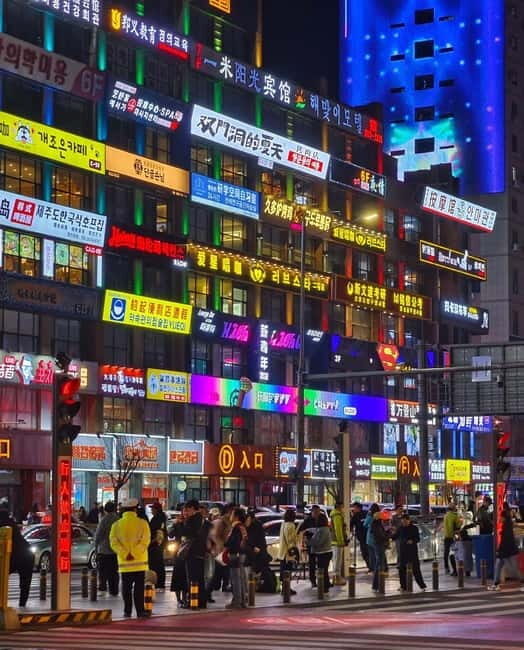
If you’re curious about China’s border regions and want a mix of natural scenery, local flavor, and cultural surprises, this Changchun to Tumen & Yanji tour could be just the ticket. For $358 per person, you’ll spend about 13 hours exploring some of the most intriguing spots along the China-North Korea-Russia frontier, all in a comfortably organized daytrip.
What we love about this experience is how it balances spectacular border views with authentic local life. You’ll stand at the Tumen River’s edge, gaze across to North Korea, and visit busy markets packed with Korean-Chinese snacks and crafts. Plus, the chance to see traditional Korean houses at the Ethnic Folk Garden makes this more than just a sightseeing run—it’s a peek into a unique cultural mosaic.
That said, it’s not a tour for everyone. The long travel times and walking involved mean it’s best suited for active travelers who enjoy seeing a variety of sights without a lot of downtime. If you’re looking for an enriching, history- and culture-focused experience around China’s northeastern border, this trip offers plenty of value.
You can check availability for your dates here:Key Points
- Border Views: Stand at the Tumen River and see North Korea from a safe distance.
- Cultural Insights: Explore the Korean Folk Village and learn about the ethnic minority in China.
- Local Markets: Dive into Yanji’s West Market for Korean snacks, crafts, and lively street scenes.
- Photo Opportunities: Snap fun shots at Yanji’s viral LED comment wall.
- Convenience: All transportation, tickets, and local snacks are included, simplifying your day.
- Limited Group Size: Small groups (1-6 people) ensure a personalized experience.
A Balanced Look at the Tour Experience

This tour from Changchun or Yanji is designed to give you a well-rounded view of China’s far northeastern frontier. It combines natural scenery, cultural depth, and lively markets, making it a compelling choice for travelers interested in regional diversity.
Starting with the Border: Tumen River and Tumen Port
The journey kicks off with a morning train from Changchun at 9:20 am, taking you eastward into Jilin Province. Once you arrive in Tumen, you’ll visit Boundary Marker No. 87—a notable marker in the series of boundary posts that define China’s frontier with North Korea. Here, the view across the Tumen River is striking: villages, military watchtowers, and rural life unfold on both sides, offering a tangible sense of proximity to North Korea.
You’ll also see the Tumen Highway Border Gate and observe the Tumen Railway Bridge, which underscores the importance of transportation links in this border region. The area is evocative, giving travelers a sense of the geopolitical landscape in a very immediate way. We appreciated the way the guide explained the significance of these border structures, making the views more meaningful.
Yanji’s West Market: Food, Craft, and Local Color
Next, the tour heads to Yanji’s West Market, a lively hub packed with vendors selling everything from fresh produce to Korean-inspired snacks. It’s an explosion of color, scent, and sounds—a sensory overload that’s perfect for those who love vibrant street scenes. Vendors here sell blood sausage, sticky rice cakes, cold noodles, and pickled vegetables, providing a taste of authentic Korean-Chinese cuisine. As one traveler remarked, “The energy of the market and the fusion of cultures made this a truly immersive experience.”
Walking through the market, you’re likely to mingle with locals, see families shopping, and enjoy the casual, friendly atmosphere. It’s a great spot to try something new or pick up a small souvenir—perhaps some traditional crafts or Korean-style snacks you won’t find elsewhere.
More Great Tours NearbyThe Korean Folk Village: A Window Into Ethnic Traditions
After the market, you’ll visit the Korean Folk Village, an open-air museum that showcases traditional thatched-roof homes, farming tools, and family life as it was in earlier times. This peaceful space offers a glimpse into the Korean minority culture in China, with exhibits about farming, customs, and daily routines. It’s not just a static display; it’s a place that lets you imagine what life was like before the rapid urbanization that characterizes much of modern China.
The village is tranquil but culturally rich, providing context for the region’s history and the ongoing importance of ethnic identity in China. Visitors often find it a quiet but meaningful stop—something different from the usual bustling urban attractions.
Fun and Playful: Yanji’s LED Danmaku Wall
The last stop is Yanji’s famous digital LED comment wall—a playful feature that displays animated text, memes, and messages in Mandarin, Korean, and local dialects. As one reviewer put it, “It’s a fun photo op and a chance to see the youth culture in action.” The glowing phrases range from humorous to romantic, often reflecting the humor and vibrancy of Yanbians. It’s a great way to wind down the day with some lighthearted fun before heading back to the train station.
Returning and Practical Details
The tour wraps up with a 19:25 pm train from Yanji back to Changchun. Since the prices cover train tickets, border visits, and local snacks, you won’t have to worry about extra costs—just bring your passport or ID for border checks. The small group size (often just 1-6 people) keeps things intimate and flexible, with guides speaking multiple languages including English, Chinese, Korean, Japanese, and Spanish.
While lunch and dinner aren’t included, guides usually suggest local eateries or snacks, making it easy to experience authentic cuisine without feeling rushed. Keep in mind, the full day’s walking and border visits might be tiring for some, so comfortable shoes and a good attitude are recommended.
Who Is This Tour Best For?
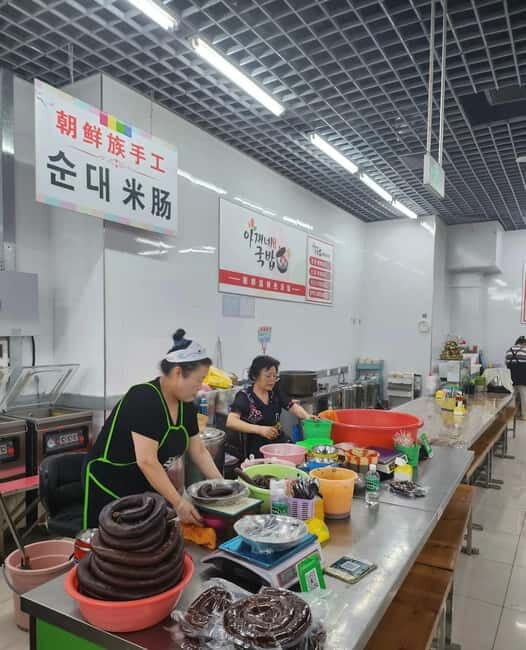
This trip is ideal if you’re interested in border geography, ethnic cultures, and local daily life in China’s northeast. It’s particularly suited for travelers who enjoy a mix of sightseeing, cultural learning, and vibrant street scenes in a compact, organized package. Because of the timing and length, it’s best for those who are comfortable with a busy schedule and walking.
If you’re looking for a straightforward, well-organized way to see China’s border region and learn about the Korean minority’s influence, this tour offers a lot of value for its price. It’s also perfect for small groups or independent travelers who prefer guided trips to maximize local insights.
A Detailed Breakdown of the Experience
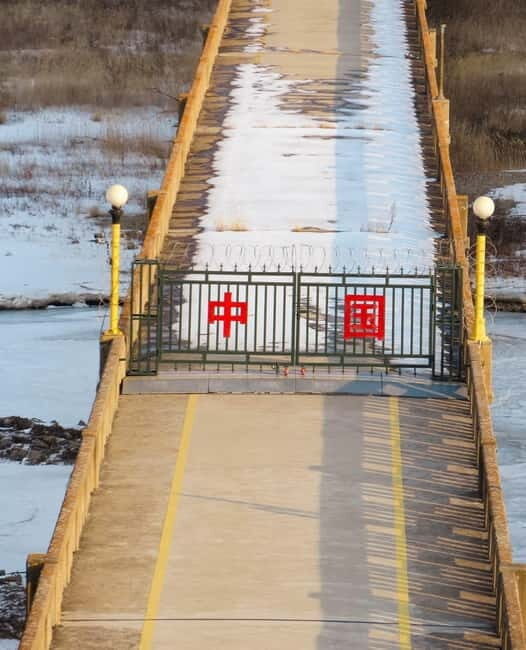
Transportation & Logistics
Starting from Changchun or Yanji, the use of a train ensures you travel in comfort and see the landscape change smoothly. The morning departure from Changchun and evening return from Yanji means you get a full, immersive day without long waits. The small group size enhances flexibility, and the guide’s language skills make communication easy.
Border Area: Significance & Atmosphere
Standing at Boundary Marker No. 87 isn’t just about taking photos—it’s about connecting with the geopolitical reality of the region. You’ll see the physical boundary between China and North Korea, with distant villages and watchtowers adding to the scenery. The Tumen River itself plays a key role in regional trade and security, which the guide will likely touch on.
Yanji’s Markets & Cultural Sites
Walking through the West Market, you’ll notice the blend of Korean and Chinese influences—spicy kimchi alongside Chinese vegetables. The market’s energy is contagious, and sampling local snacks is a highlight. Vendors are welcoming, and many visitors comment on how authentic the experience feels compared to tourist-only markets elsewhere.
The Korean Folk Village provides a tranquil, picturesque setting to appreciate traditional architecture and customs. The exhibits are educational without feeling overly staged, and you’ll leave with a deeper appreciation of the region’s diverse cultural identity.
Yanji’s Viral Wall & Youth Culture
The LED Danmaku Wall offers a fun, contemporary touch. The glowing text, memes, and messages reflect a playful, youthful spirit that contrasts nicely with the traditional vibe of the Folk Village. It’s a reminder that this region isn’t just about the past—it’s alive and vibrant today.
Cost & Value
At $358, the price includes train tickets, border access, market visits, cultural sites, and snacks. The value lies in the convenience and diversity of experiences packed into one day. If you tried to visit these spots independently, it might cost more and involve complex logistics, especially crossing borders and coordinating transport.
Potential Drawbacks or Considerations
The main consideration is the long hours spent traveling and walking—not ideal if you prefer more relaxed days or have mobility issues. Also, the tour doesn’t include meals, so you’ll want to budget for lunch and dinner or follow guide recommendations. Finally, since the border area can be sensitive, expect some checkpoints and border security measures.
Final Thoughts: Who Should Consider This Tour?
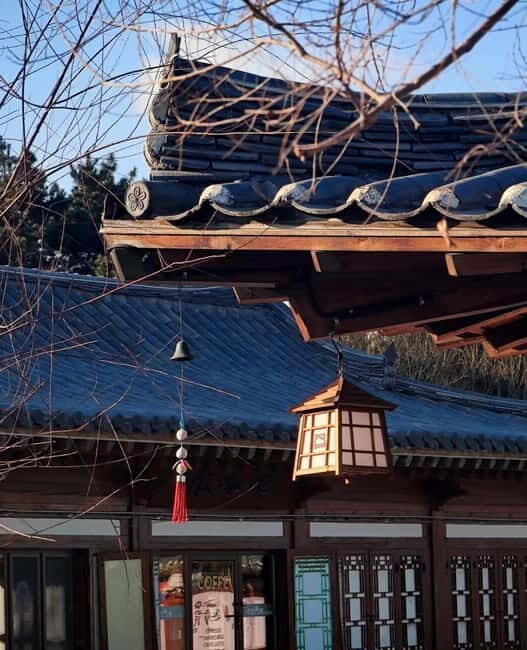
If you’re a traveler eager to see China’s northeastern border, learn about ethnic minorities, and enjoy local markets and cultural sites in one well-organized day, this tour offers genuine value. It’s best suited for those comfortable with active days, curious about border geopolitics, and interested in authentic regional experiences beyond the usual city sights.
This trip won’t suit travelers looking for luxury or a very leisurely pace, but for those wanting a practical, insightful glimpse into an often-overlooked corner of China, it hits the mark. It combines natural scenery, cultural depth, and lively street life—an eye-opening day that sticks with you.
FAQ
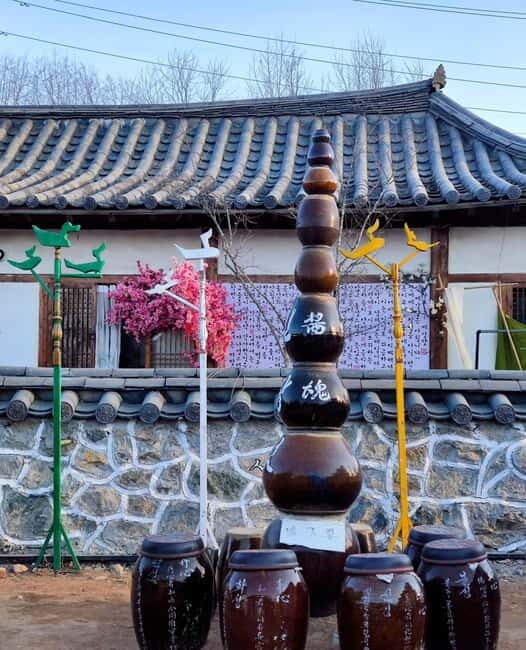
Is this tour suitable for travelers with mobility issues?
It’s probably not ideal, as it involves walking and some uneven surfaces at the border area and markets. The tour experience is more active than sedentary.
Do I need a visa or special documents?
You’ll need your passport or ID card, especially for border crossing purposes. The tour provides tickets and guides you through border checks.
Can I join the tour if I don’t speak Chinese?
Yes, the guide speaks multiple languages including English, Korean, Japanese, and Spanish, making communication easier for international travelers.
Is the price all-inclusive?
The $358 covers train tickets, border visits, the market, cultural sites, and two snacks or drinks. Meals are not included, but guides will recommend local options.
What should I bring?
Bring your passport or ID, comfortable walking shoes, some cash for extra snacks or souvenirs, and possibly a camera to capture border views and lively street scenes.
What is the group size?
Small groups of 1-6 people typically ensure a more personal experience, though larger groups may inquire about custom options.
This tour offers a meaningful peek into China’s northeastern frontier—an area where history, culture, and geopolitics meet. If you’re ready for a full day of diverse sights and local flavor, it’s a trip worth considering.
You can check availability for your dates here: